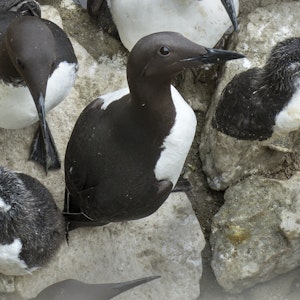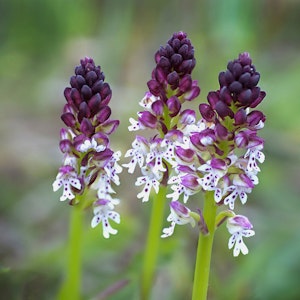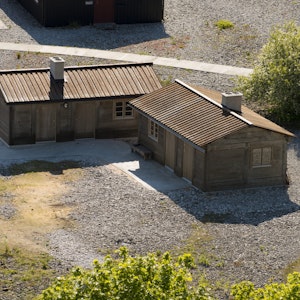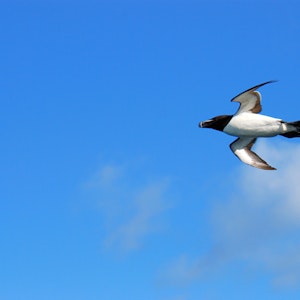
Stora Karlsö
The island of Stora Karlsö off Gotland is not just popular for its wildlife and scenery, with the largest bird mountain in the Baltic Sea and its famous red-yellow orchid meadows at the end of spring. The island, which is a coral reef more than 400 million years old, also has a rich cultural history going back to the Stone Age and was also the site of pioneering conservation measures in Sweden. The island was purchased and protected as long ago as the 1880s, and has now been a popular destination for visitors for nearly a hundred years.
Stora Karlsö is most famous for its enormous colonies of guillemot and razorbill, which breed in their thousands on the vertical cliffs on the island. Hard to imagine that, just over a century ago, these ‘penguins’ of the northern hemisphere were at risk of extinction because of ruthless recreational hunting. In order to save the birdlife, a private company was formed, which during the 1880s gradually purchased all the land on the island. That same company – Karlsö Jagt- och Djurskyddsförenings AB – still owns the island. As soon as the island was purchased, bird hunting was banned. Karlsö is actually the world’s second-oldest conservation area after the Yellowstone National Park in the USA.
Stora Karlsö has a long tradition as a popular destination for people interested in wildlife. As long ago as the 1920s, regular boat trips started from Klintehamn on Gotland and, for nearly a hundred years, the motto ‘preserve, protect and display’ has been applied through its expert guided tours on the island. The island is now visited by nearly 10,000 guests a year, of which over a third stay overnight and enjoy the exclusive stillness of early mornings and summer evenings.
There are many reasons to visit Stora Karlsö. Dazzling meadows of orchids, with thousands of elderflower orchids and early-purple orchids at the start of June is one. Another is the rich birdlife, which not only offers guillemots and razorbills, but also species such as the velvet skoter, goosander and the common eider, exciting small birds like the barred warbler and the rosefinch, and visiting eagles from Gotland. A third reason is the rich cultural history of the island, starting with the first seal hunters 9,000 years ago, and then continuing with activity in the Bronze and Iron Ages, stone quarrying in the Middle Ages, Linné’s visit in1741 and, more recently, sheep grazing, hare hunting and fishing on and around the island.
Stora Karlsö has become particularly well known for its high-quality guided tours. The guides are carefully recruited and undergo continuous training during the season. The exhibition in the museum has displays about the landscape, geology and history of the island. Expertise is a top priority on Karlsö. Many Gotland schools arrange trips to the island during the spring, and there has long been close collaboration with a large range of research projects.
Criteria


About the company
- Name
- Stora Karlsö
- Address
-
Hamnvägen 16
62377 Klintehamn - Phone
- +46 (0)498 - 24 05 00
- info@storakarlso.se
- Webpage
- www.storakarlso.se



